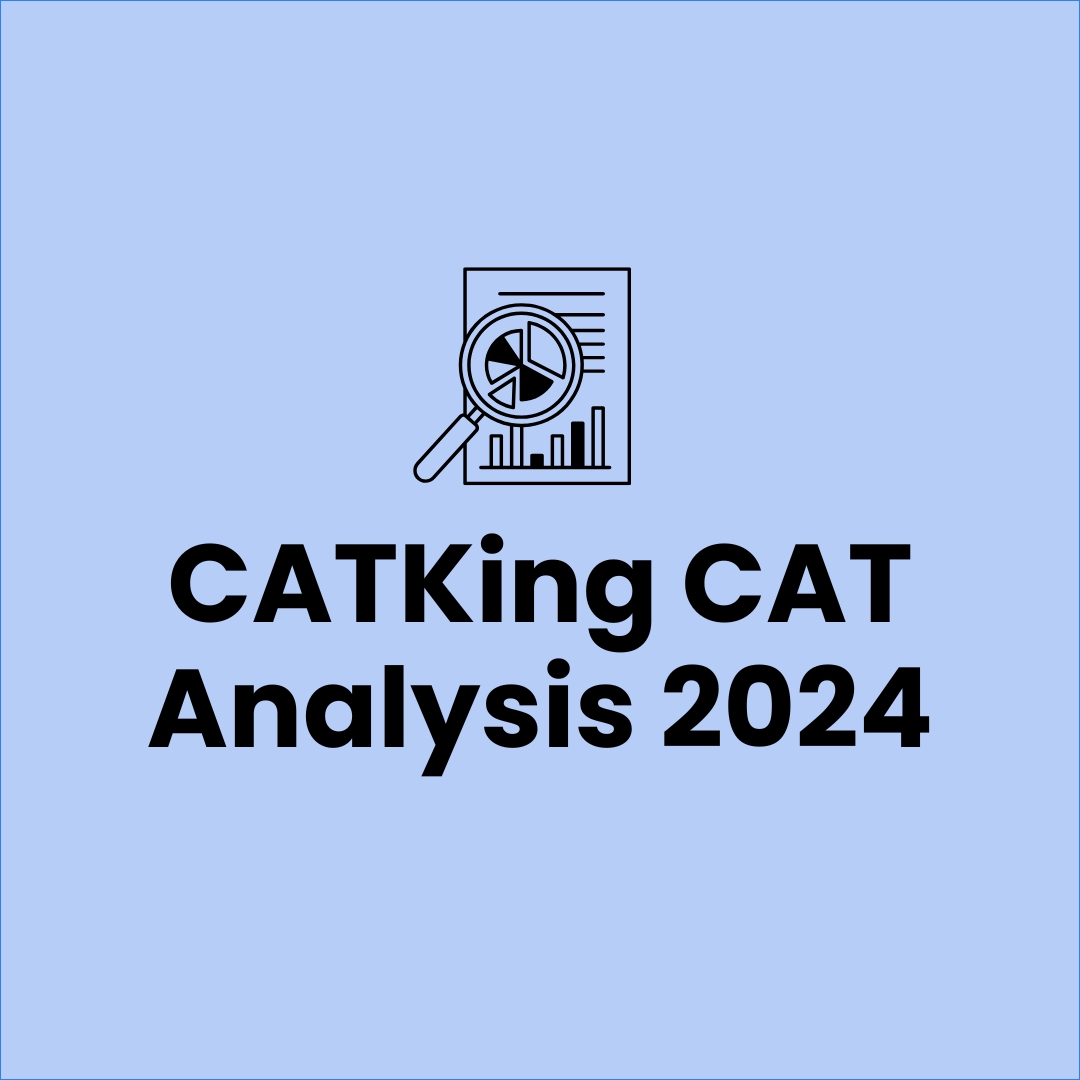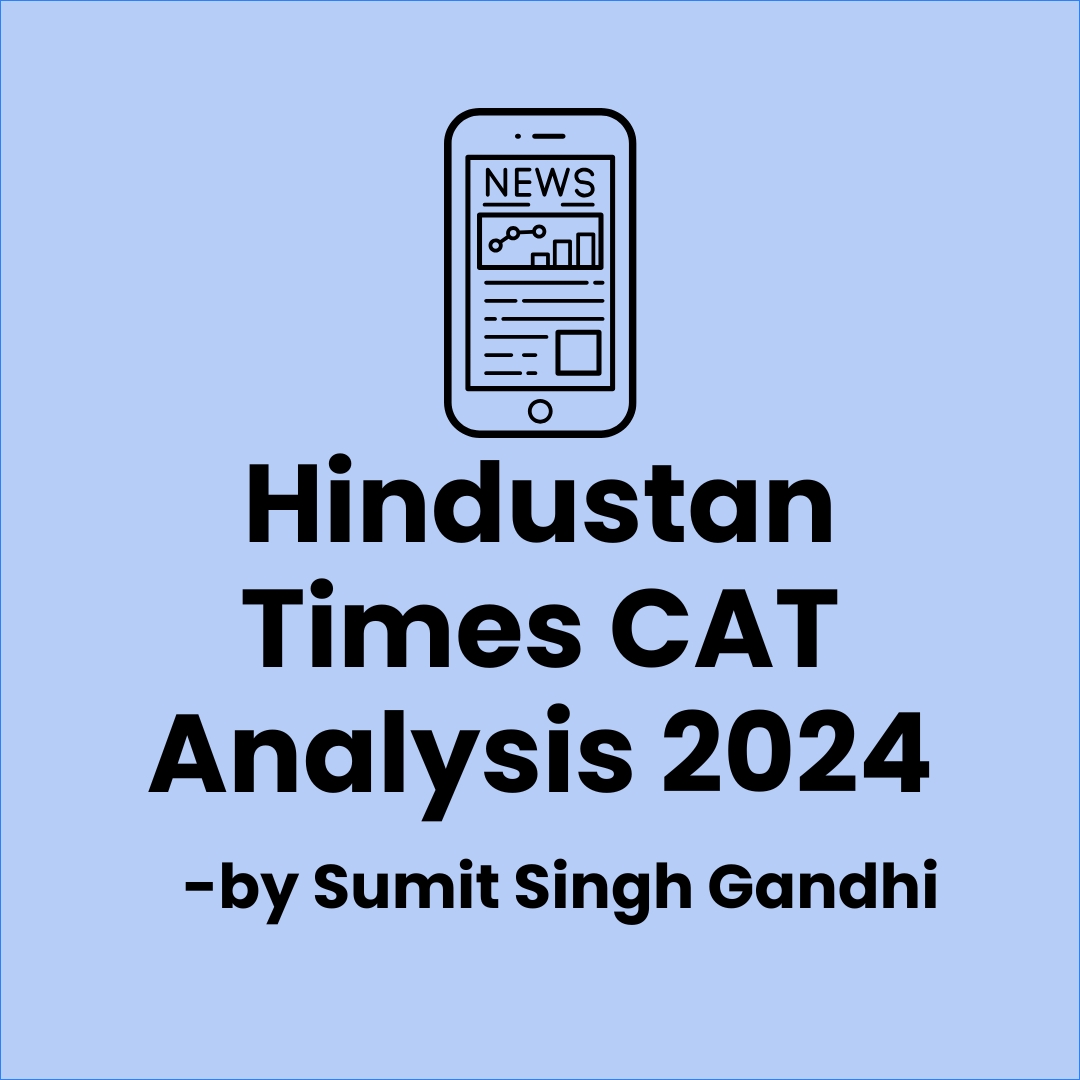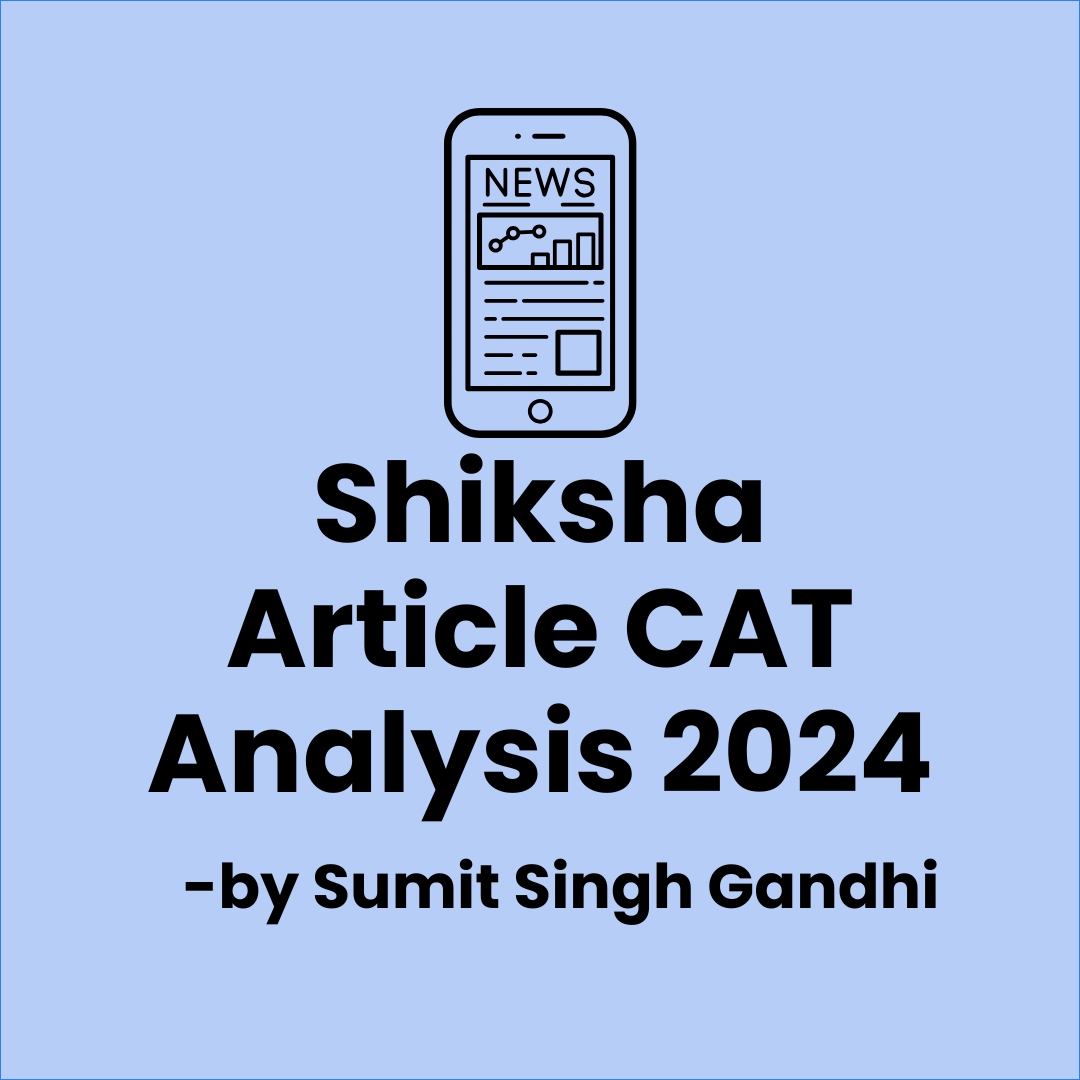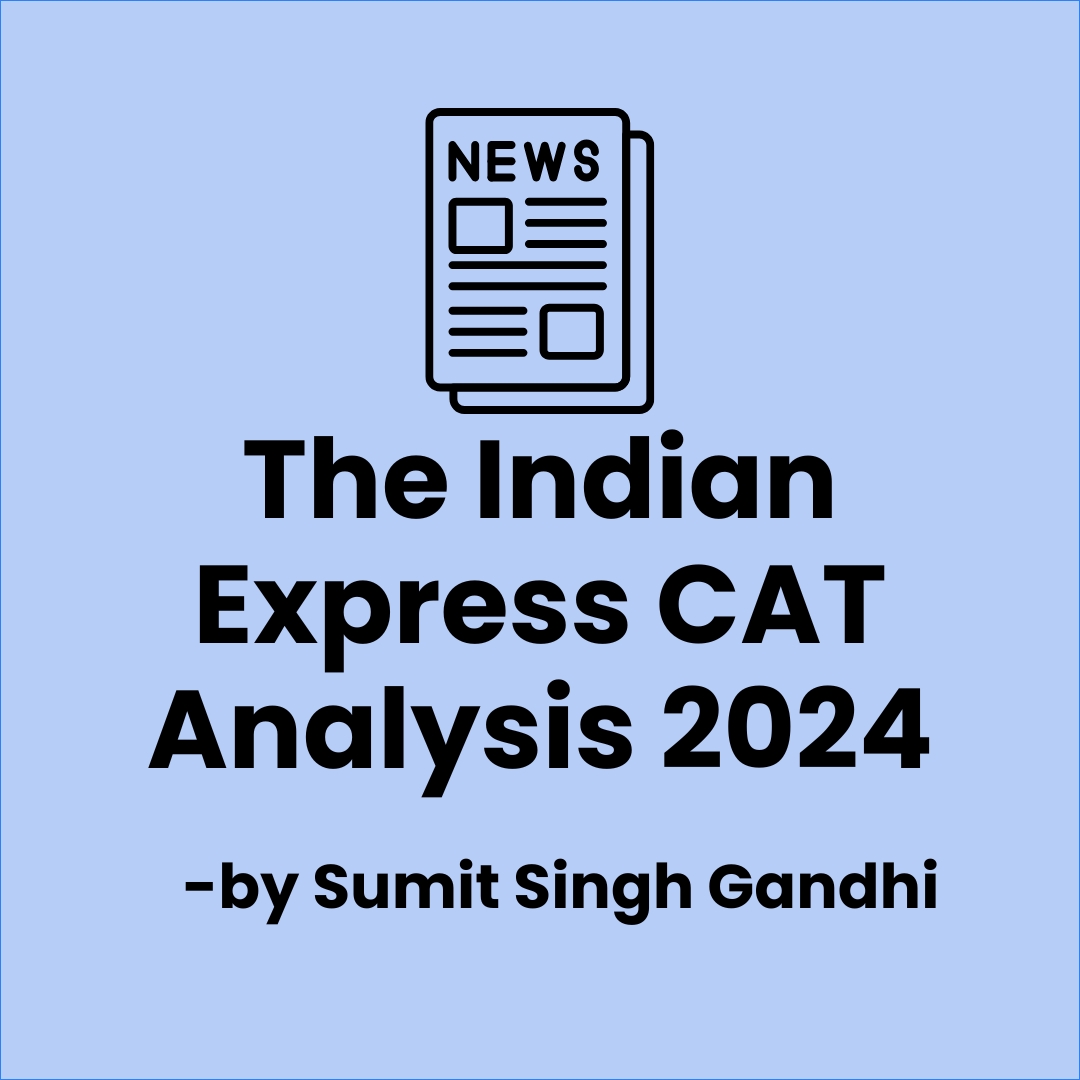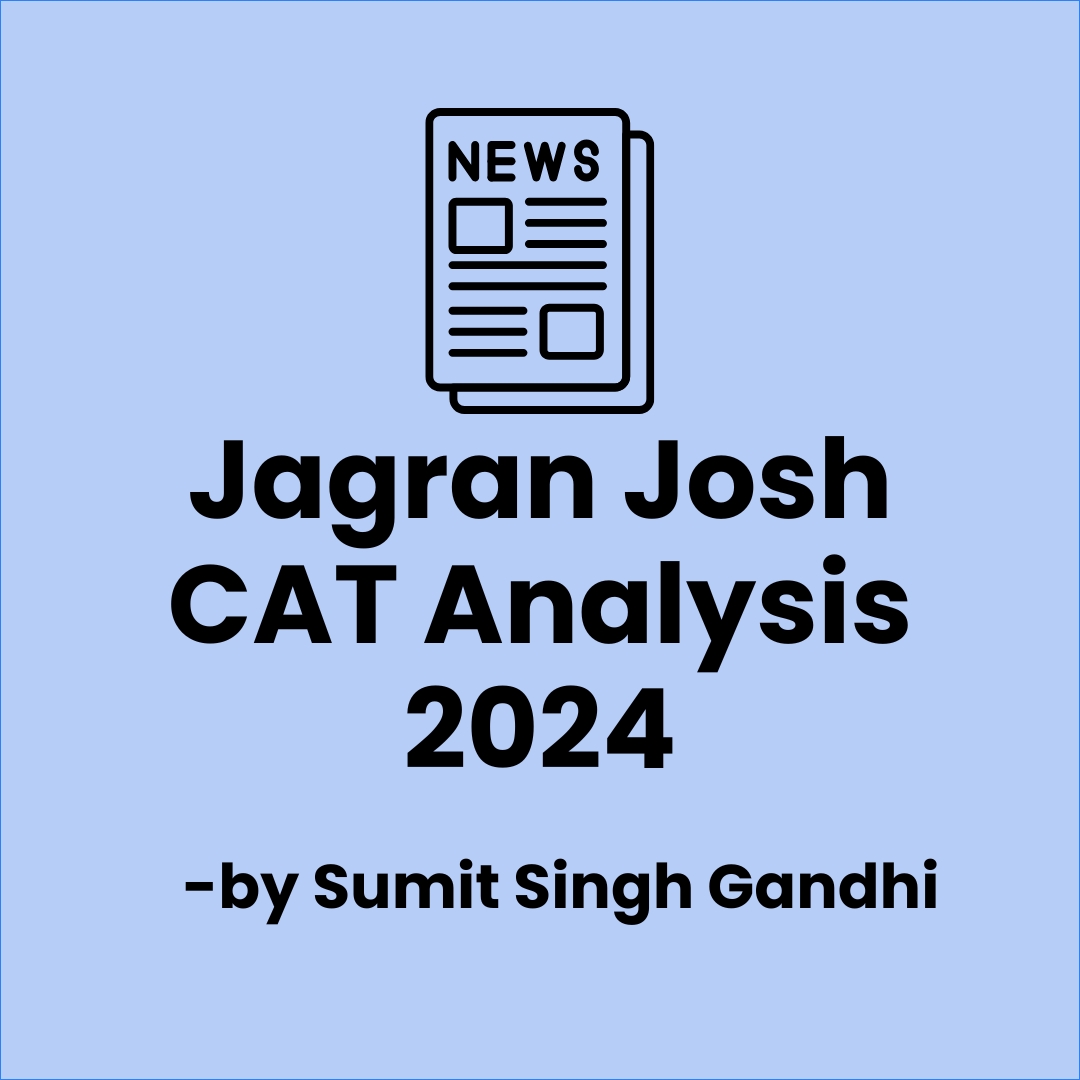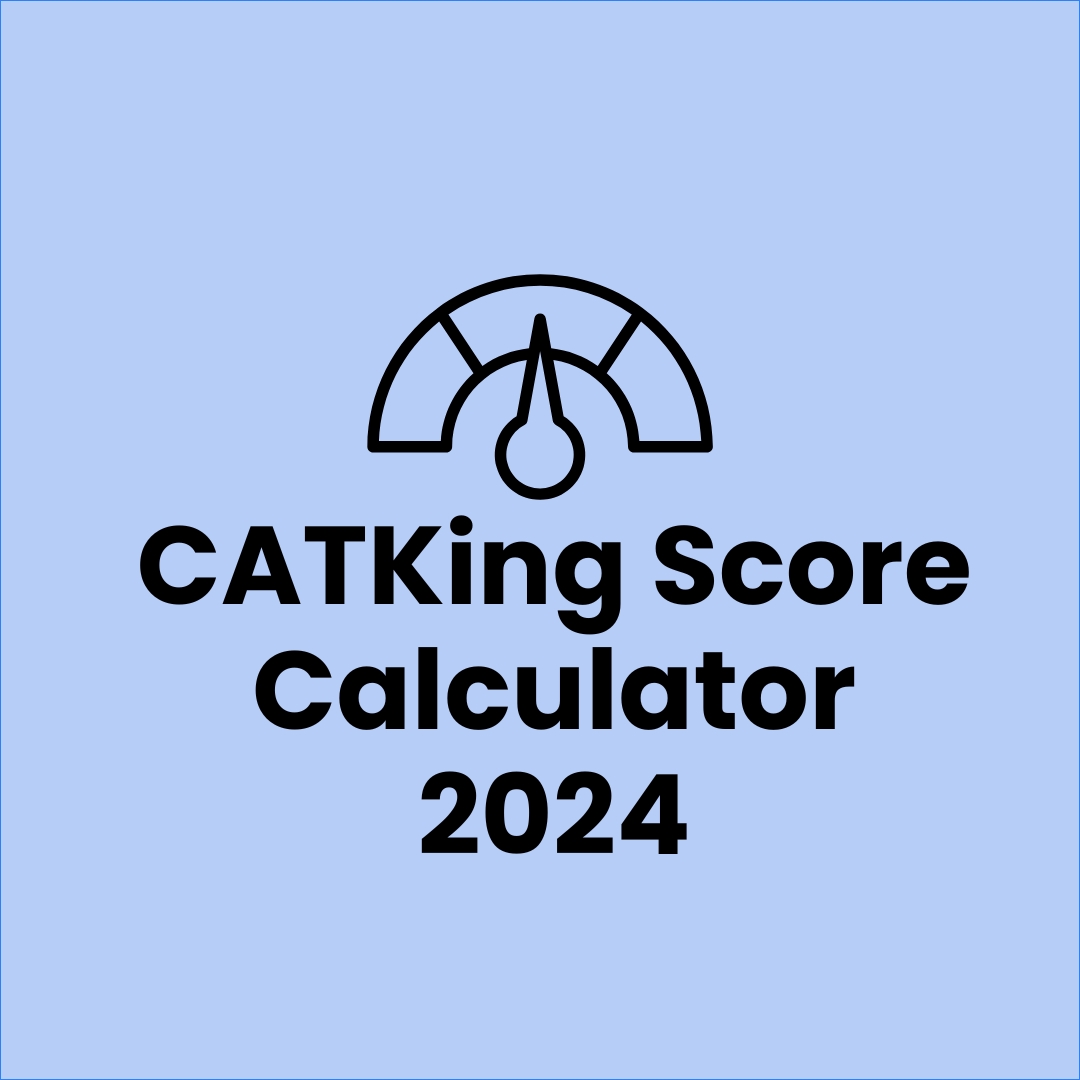SNAP 2022 Analysis
The SNAP Test is a common aptitude test administered by Symbiosis International (Deemed) University for admission to MBA/PGDM programs offered by its 15 constituent institutes. Symbiosis Institute Bangalore and Pune, are ranked among Tier 1 B-schools of India in terms of MBA courses and placement offers. SNAP will be conducted on 18th December, 8th January, and 15th January this year. This exam is considered comparatively easier than CAT and XAT, and hence scoring 99 percentile and above should not be a tough task for aspirants preparing for CAT.
General English has a sectional good score of 10, A-LR has a score of 18-19, and QA, DI-DS has a score of 12-14. Let's have a look at the SNAP 2022 question paper and analysis in sections.
General English
There were no RC sections in the General English portion. Check out the table below for topic-specific questions from the SNAP 2022 question paper's General English section:
| SNAP General English Topics | Number of Questions |
Fill in the Blanks | 3 |
Grammar (Parts of Speech, Preposition, Prefix, Model verb) | 6 |
Active-Passive Voice | 1 |
Synonyms | 1 |
Tense | 1 |
Poem | 1 |
Sentence with no objection | 1 |
Correct spelling | 1 |
Compound words | 2 |
Total | 15 |
Analytical & Logical Reasoning
Analytical Reasoning had 11 questions and Logical Reasoning had 14 questions. This part was quite similar to prior years. The table below shows the topics covered in the Analytical & Logical Reasoning section of the SNAP 2022 question paper:
| SNAP Analytical and Logical Reasoning Topics | Number of Questions |
Statement Assumptions | 2 |
Cause & Effect | 2 |
Linear Arrangement | 1 |
Truth or Liar-based | 1 |
Blood Relations | 2 |
Coding | 1 |
Statement Argument | 2 |
Statement Course of Action | 2 |
Clock | 2 |
Syllogism | 2 |
Number/symbol Series | 4 |
Input/Output | 1 |
Analytical Reasoning/ Critical Reasoning | 3 |
Total | 25 |
Quantitative, Data Interpretation, and Data Sufficiency
There were 20 questions in this part of SNAP 2022. The majority of the problems were from Arithmetic, with only one Data Interpretation topic. This year, there was no Data Sufficiency question. The table below shows the topics covered in the Quantitative, Data Interpretation, and Data Sufficiency sections of the SNAP 2022 question paper:
| SNAP QA & DI Topics | Number of Questions |
Arithmetic | 6 |
Algebra | 4 |
Data Interpretation (DI) | 2 |
Numbers | 2 |
Geometry/ Mensuration | 2 |
Height and Distance | 1 |
Matrix | 1 |
P&C | 2 |
Total | 20 |
SNAP 2021 Analysis
SNAP 2021 Question Paper and Answer Key
Question: This question was based on Family Tree. (Incomplete question)
Answer: Daughter
Question: This question was also based on the family tree. (Incomplete question)
Answer: Daughter in Law.
Question: Three series were given and the wrong number has to be selected. 9, 27, 81 ; 16, 64, 256 ; 5, 125, 625.
Answer: 5
Question: What is the synonym of Copious?
Answer: Plentiful
Question: Find the degree between 10 am and 4 pm.
Answer: 180 degree
Question: One more question was based on clocks. (Incomplete question)
Answer: 1 x 5
Question: Find degrees between 12 pm and 5.10 pm
Answer: 155 degree
Question: Today is Sat… then the day after 69th day will be.
Answer: Friday
Question: I shall meet you tomorrow, and I will meet you tomorrow? is any of these sentences American English?
Answer: Will = American English, Shall = British English
Question: Find the incorrect sentence: 1800 is not a leap year… ; In a normal year, 52 weeks + 1 day… ; In a century last day can’t be Tuesday… etc (Incomplete question)
Answer: In a century last day can’t be Tuesday
Question: 1 P&C …. 0,2,4,5,6,7,8,9 – how many numbers 2000 & 7000. Repetition not allowed. (Incomplete question)
Answer: 840 numbers
Question: 1 ball drop from the height of 300m and it rebounds 4/5…Find the total distance traveled. (Incomplete question).
Answer: 2700
Question: A circle was given, in which a triangle was given. One exterior angle was asked. (Incomplete question).
Answer: 70
Question: axb = 551, bxc = 1073. Find a+b+c.
Answer: 19+29+37
Question: One question was based on probability. (Incomplete question)
Answer: 0.38
Question: Jack fell down and broke his crown and Jill came tumbling after. What is the conjunction here?
Answer: and
Question: Fill in the blanks. If I ____ magician, I would do something… (Incomplete question).
Answer: meet
Question: One question was based on the log.
Answer: None of these
Question: What is the correct spelling? (Incomplete question)
Answer: Nuclei
Question: A question was based on the mixture of weights. 20 kg and 60 kg. (Incomplete question)
Answer: 20 kg
Question: One question was based on the mixture and allegations. (Incomplete question)
Answer: 81.5
Question: Remainder question in which something 0 divisible by 9 and value of x has to be find. (Incomplete question).
Answer: x=8
Question: In one question, the average speed has to find out. Incomplete question
Answer: 20 km/h
Question: There was one question based on pipes. (Incomplete question)
Answer: 7.2
Question: In one question p+q has to be found out. (Incomplete question)
Answer: 3
Question: One question was based on the binomial expression.
Answer: -39
Question: No. of isosceles triangles has to be calculated. (Incomplete question)
Answer: 17
SNAP 2021 Analysis – First Phase
SNAP 2021’s first phase was concluded today, with no change in the total number of questions which remained to be 60 with a time limit of 60 minutes.
The overall difficulty level was not very different than what was expected depending on the previous year’s level.
| Section | No. of Questions | Difficulty Level |
| General English | 15 Questions | Easy to moderate |
| Analytical and Logical Reasoning | 25 Questions | Easy to moderate |
| QA, DI & DS | 20 Questions | Moderate to Difficult |
| Total | 60 Questions | Easy to moderate |
Overall: The exam was Doable not very tough. The overall difficulty level was not very different than what was expected depending on SNAP 2020. According to students time limit wasn’t a major issue.
Sectional Analysis:
General English: Vocabulary, Grammar, Poem Based
In comparison to SNAP 2020, the General English section this year was easier. With no questions on Reading Comprehension. There was one poem-based question, rest of the section comprised of Verbal Ability and Grammar-based questions.
Question Summary:
| Type of Question | No. of Questions |
| Vocabulary | 6 Questions |
| Grammar | 8 Questions |
| Poem Based | 1 Question |
| Total | 15 Questions |
Students were able to attend this section in 13-14 minutes
Reasoning:
Question Summary:
This section is comprised of diverse topics. SNAP really went all-in with this section. Out of 25 questions, 9 were verbal-based logical reasoning.
Analytical Reasoning
| Type of Question | No. of Questions |
| Coding- Decoding | 2 Questions |
| Blood Relations | 2 Questions |
| Number Series | 1 Question |
| Letter Series | 2 Questions |
| Syllogisms | 1 Question |
| Linear Arrangement | 2 Questions |
| Date-Time | 4 Questions |
| Odd one out | 1 Question |
| Input Output | 1 Question |
| Total | 16 Questions |
Logical Reasoning:
| Type of Question | No. of Questions |
| Conclusion | 2 Questions |
| Assumptions | 1 Question |
| Action Based | 2 Questions |
| Effect analysis | 1 Question |
| Reasoning | 3 Questions |
| Total | 9 Questions |
Students were able to complete this section in around 25 minutes.
Quantitative, Data Interpretation, Data Sufficiency:
This section was moderately difficult in comparison to other sections. Questions ranged from all possible topics. Some questions from Numbers, PnC were very direct, whereas Binomial Theorem questions were tricky. A good mix of direct and indirect questions was carried by this section.
Question Summary:
| Type of Question | No. of Questions |
| Percentages | 1 Question |
| Profit & Loss | 1 Question |
| Time and Work | 2 Questions |
| Time, Speed & Distance | 2 Questions |
| PnC | 2 Questions |
| Probability | 1 Question |
| Numbers | 2 Questions |
| Geometry | 2 Questions |
| Quadratic Equations | 1 Question |
| Mensuration | 1 Question |
| Data Interpretation | 2 Questions |
| Series and Progressions | 1 Question |
| Binomial Theorem | 1 Question |
| Set Theory | 1 Question |
| Total | 20 Questions |
Total: 20
Students were able to complete this section in around 25 minutes.
Conclusion:
A score of 39-41 would be considered a good score, considering the negative marking of 0.25. The expected cutoff of SIBM Pune for General category could fall in the range of 38~39 and that of SCMHRD could be around 35~36. All the Best to all MBA Aspirants! Punch in your thoughts and concerns and we shall sort you up.
SNAP 2020 Analysis
The first test scheduled date was 20 December 2020. SNAP 2020 was based on a modified pattern as reported on the website of Symbiosis International University (SIU). The main change was the reduction of the total number of questions and the implementation of a standardized marking system. The other change is that ‘the candidate will appear for a maximum of two SNAP 2020 tests. This time there were Objective Style (MCQ) questions only as announced by the SIU.
The review of the SNAP question paper shows that it was an easy test overall. All three sections-General English, Analytical & Logical Reasoning (A-LR) and Quantitative, Data Interpretation & Data Sufficiency (QA, DI-DS)-were easy. The Verbal section was simple, as it had questions based on vocabulary, grammar, and sentence completion. The section on analytical & logical reasoning was easy to moderate. Verbal reasoning, sequence, and arrangement-based questions dominated this segment. As there were a few questions focused on probability and combination & permutation, Quant’s section was mild. This segment was dominated by modern mathematics, distance-to-time speed, and ratio & proportion.
SNAP Exam Pattern Overview
| Topics | No. of Questions | Marks |
| Verbal Ability | 15 | 15 |
| Analytical & Logical Reasoning | 25 | 25 |
| Quantitative Aptitude, DI & DS | 20 | 20 |
| Total | 60 | 60 |
SNAP Exam 2020 Cut-Offs
| Institute | Cutoff (Score) |
| SIBM (Pune) | 45+ |
| SCMHRD | 43+ |
| SIIB | 40+ |
| SIBM (Bengaluru) | 38+ |
SNAP 2020 Analysis: Section-wise
SNAP 2020
- In this segment this year, there was no question of reading comprehension
- Idioms and Phrases, Spelling Corrections, Sections of Speech, or Figures of Speech were questions in the section.
- There were slightly tricky collective noun and compound word queries.
- In this segment, about 10+ questions can be considered a successful effort.
Topic-Wise Break up of Verbal Ability
| Topics | No. of Questions |
| Fill in the Blanks | 3 |
| Grammar | 1 |
| Figures of Speech | 1 |
| Identify - Parts of Speech | 1 |
| FIB - Prepositions | 2 |
| Synonyms | 1 |
| Para Jumble (Find the Start) | 1 |
| Idioms and Phrases | 2 |
| Collective Noun | 1 |
| Compound Word | 1 |
| Spelling | 1 |
| Total | 15 |
Analytical & Logical Reasoning
SNAP 2020’s Analytical & Logical Reasoning portion was very easy.
- Coding-Decoding, Letter Sequence, Blood Ties, Input/Output, Calendars, Clocks, Syllogism, Analogies, Circular Arrangements, and Verbal Reasoning were questioned in the segment.
- Questions in the number series were slightly difficult, but feasible.
- Around 16+ attempts in this section will be considered successful attempts in this portion.
| Topics | No. of Questions |
| Coding-Decoding | 3 |
| Number Series | 3 |
| Input/Output | 2 |
| Clocks | 2 |
| Calendars | 2 |
| Verbal Reasoning (Course of Action) | 2 |
| General Misc. Reasoning | 2 |
| Circular Arrangements | 2 |
| Syllogisms | 1 |
| Verbal Reasoning (Assumption) | 2 |
| Analogies | 1 |
| Letter Series | 1 |
| Blood Relations | 1 |
| Action | 1 |
| Total | 25 |
Quantitative, Data Interpretation and Data Sufficiency
- There were straightforward and easy questions in this portion of the SNAP 2020 review
- Arithmetic dominated the setting with nine questions,
- There was just one question about Data Interpretation
- In the SNAP exam this year, there was no question of data sufficiency.
- Out of 20 questions, 15+ attempts in this segment will be considered a successful attempt.
Topic-wise break up of Quantitative, Data Interpretation and Data Sufficiency section of SNAP 2020
| Topics | No. of Questions |
| Percentages, Profit & Loss | 3 |
| Averages | 2 |
| Travel, Speed & Distance | 2 |
| Number Theory | 2 |
| P&C | 2 |
| Probability | 2 |
| Ratios | 1 |
| Time & Work | 1 |
| Number Series | 1 |
| Logs | 1 |
| Mensuration | 1 |
| Coordinate Geometry | 1 |
| Data Interpretation | 1 |
| Total | 20 |
SNAP 2019 Analysis
This year with the change in the exam structure, there were only three sections viz. General English, Quantitative Ability, and Analytical & Logical Reasoning in the paper with 34, 35, and 36 questions in each section respectively. You could have attempted the paper in the sequence of your choice as you were allowed to move from one section to another section. The total time given for the paper was 120 minutes. In this article, you will get a detailed SNAP analysis for 2019.
General English
The General English section was dominated by vocabulary questions. There were only two RCs like last year but this time one of them had 3 questions while the other had 5 questions, which made it 8 questions from RCs. Except for 1 RC, the entire General English was a cakewalk and one should have got done with it really quickly. This time around, the vocabulary questions weren’t as difficult as it was last year. Compared to the vocabulary words that figured in the paper last year (for example: “tergiversate”), this year’s vocabulary was definitely easier.
The FIB questions could have been answered by using common sense. The grammar-based questions were easy as well. However, the two questions on voice change were extremely easy. Overall, it was an easy section to attempt. An attempt of 25-26 in 20-25 minutes with 90% plus accuracy is desirable.
Quantitative Ability
The quantitative ability section turned out to be much more time-consuming as compared to previous years. The paper was dominated by questions from Time, Speed and Distance, Geometry, and Modern Math. The lack of a calculator meant that estimates had to be used while answering quite a few questions.
Some of the questions were long to read and one would wonder why wouldn’t the question-setter write it in fewer words. While the questions weren’t very difficult it was important for students to spend a good amount of time on this section. An attempt of 18-20 in 45 minutes with 90% accuracy would be ideal.
Logical and Analytical Reasoning
Logical Reasoning was quite similar to previous years with some of the questions being quite boring and lengthy. There were a couple of cases that were quite easy and should be easy marks for the test takers. The proportion of verbal reasoning questions was quite low and analytical reasoning questions dominated. A good score in Logical Reasoning would be around 32-33.
SNAP 2018 Analysis
SNAP 2018 was expected to show some unique surprises this year, especially after the change in the Paper Pattern incorporating the Special Non-MCQ Questions with a double marking scheme. These types of questions definitely were on the tricky side, especially for GK and Quantitative Ability. But it was one of those exams which were easier than the previous years. In this article, you will get a detailed SNAP analysis for 2018. Negative marking existed for the Multiple choice questions 1/4th i.e: 0.25 negative marks and 0.5 for the NON-MCQ Questions
SNAP tested students on Speed, Logic, and Analytical skills, this year particularly there was a higher focus on the analytical skills which was evident with detailed puzzles and reading comprehension passages which tested the interpretation skills.
General English
General English or the Verbal section was overall moderate, for all students who have been sincerely studying post-CAT also would have been easily able to attempt around 25-28 questions. The vocabulary questions were pretty direct and simple, the CATKing students would have been pleased here to see some of the Verbal Wednesday vocabulary words come in the exam. The reading comprehension was lengthy and also had answered with close options hence needed some focus and would have been manageable. The fill-in-the-blanks were a little on the tougher side hence were more time-consuming. Overall the Verbal Section was on the lines of the previous years with a moderate difficulty level.
Quantitative Aptitude, Data Interpretation & DS
The Quantitative Ability section was relatively trickier and lengthier when compared to last year. Especially the Non-MCQ Questions were a big risk, they had a small Note: Round up to 1 Decimal space all answers, someone who skipped the instructions would end up losing marks due to mere carelessness. The Surprise here was to have no Data Interpretation which made the paper easy for Quant Lovers and Difficult for the people who hate maths! This change ended up increasing the overall weightage of Geometry and Modern Maths in the exam. But yes would have been less time-consuming than usual mocks or previous years.
Analytical & Logical Reasoning
The Reasoning Section I would say was more difficult than how it usually has been but at least wasn’t weird like the previous year having infographics etc. The Seating arrangement Question was Stand out this time, very elaborate and lengthy but easy to score 7 Correct if one had the patience to spend 12 minutes on the same. The Coding decoding questions were tricky and would have been best to be left out as they were based on the paper folding techniques and needed more time and visualization skills. Still, students should have managed to attempt around 20-22 questions, the rest all depends on the accuracy.
General Awareness
General Awareness was doable with 10 minutes to fetch you 12-13 marks. The current affairs focused well on Politics and Business Awareness asking the presidents of organizations and a number of seats in the elections. However, the only place students can lose marks is the spelling and typo errors in the TITA Questions. As we always say remember to study the last month’s GK the paper saw a very recent November December based on 3-4 Questions. Interestingly a lot of questions were from current affairs which were less than 1 month old but no single area dominated in terms of the questions asked in the section. Overall this section was tougher as options were tricky. The cut-off expected in this section is not very high.
SNAP 2017 Analysis
SNAP 2017 continues the trend of surprising the students with innovation in the type of questions in every section. Let’s try to understand the difficulty level of each section and the key focus areas SNAP 2017 tested students on Speed, Logic, and Analytical skills, this year particularly there was a higher focus on the analytical skills which was evident with infographics being introduced in the reasoning section. This SNAP 2017 Analysis will provide you with detailed information about the difficulty level and tips on the required strategy.
Time Allocated: 2 Hrs
Negative Marking: 1/4 of Allocated Marks
Analytical & Logical Reasoning
It was a twisted section with a lot of surprises, barely any conventional analytical puzzles were there. More focus on data analytics with questions coming from clocks and calendars. In fact, the infographic was a big hit that tested you your interpretation and analytical skills. Verbal reasoning questions were eliminated this year to make their way for Game theory-based questions. The scoring part was the basic blood relations, coding-decoding and mathematical operations, and input-output-based questions.
General English
As expected, it was not like CAT dominated by Reading Comprehension; this exam had only 2 very straightforward passages but was lengthy each comprising 6 questions. Vocab-based questions: synonyms, antonyms, idioms, and phrases were from Norman Lewis one thing always recommended by me to all MBA Aspirants except for a few tricky ones but knowing the roots would have helped to make a smart guess! , said Rahul. Para jumbles could trick students if they haven’t practiced, grammar was very basic. There were some conceptual grammar questions based on the parts of speech which definitely were on the difficult side.
Quantitative Aptitude, Data Interpretation & DS
This section covered almost all conventional topics of Quant. There were questions based on a number system, percentage, geometry, averages, permutation & combination, S.I/CI, sets, and logs, etc. There were 5-6 questions based on percentage change. Some of them were verbose. Most of the geometry questions were tricky. Question-based on the number system was easy and tested the candidate’s knowledge on remainders, factors, L.C.M & H.C.F, etc. There were 2 DI blocks of 2 & 4 questions respectively. One was a line graph while the other was on pie-chart.
General Awareness
This section was dominated by current general awareness questions as mentioned in the notification itself. This section required you to be thorough with your knowledge of Business, Sports, Movies, awards Government Policies, etc. Questions were mostly based on current affairs with no emphasis on any area. Interestingly a lot of questions were from current affairs, which were more than 12 months old.
SNAP 2016 Analysis
SNAP 2016 was different from last year’s as the number of questions as well as the marking scheme changed this year. This time the total number of questions and total marks were the same. Each question was of one mark. Therefore each section played an important role in scoring well on this exam. Overall the feel of the paper was slightly easier than last year’s SNAP Paper. In this article, you will get a detailed SNAP analysis for 2016.
Time Allocated: 2 Hrs
Negative Marking: 1/4 of Allocated Marks
Also Read: 10 Tips to Crack SNAP
Analytical & Logical Reasoning
This section covered various topics of reasoning from Coding Decoding, Blood Relation, Series, to Input Output and Puzzles. There were a few questions on Critical Reasoning. The four questions on Input – output were easy. There were conventional puzzles (insects eating the books and mixing the two liquids). The series question and coding were a bit confusing and time consuming. The non verbal questions were also confusing.
General English
This year's verbal section had a fair mix of all conventional types of verbal questions ranging from grammar, vocabulary, and fill-ups to reading comprehension, sentence rearrangement, etc. The section was dominated by vocabulary based questions followed by reading comprehension, grammar, and sentence completion based questions. There were no surprise elements this year. In a nutshell, questions were based on conventional areas. There were two RCs in the paper. One of the RCs was based on Euro- crisis and another one was based on thermal liquefaction. The questions based on them were very easy, & direct. A few grammar-based questions purely checked the fundamentals of grammar. Vocabulary based questions were mostly easy to moderate. There were questions based on idiomatic usage.
Quantitative Aptitude, Data Interpretation & DS
This section covered almost all conventional topics of Quant. There were questions on Percentages, Averages, Numbers, TSD, Geometry, Profit & Loss, Basic Algebra, Partnership, Permutation Combination & Probability, etc. The questions on arithmetic were easy while on geometry a bit tricky and time consuming. One question was a mixture of surd and number systems. The questions on probability were easy. There were 2 DI blocks of 3 questions each out of which one block (of blood pressure before and after exercise) was easy while the second block (passengers in train) was time-consuming.
General Awareness
This section was dominated by current general awareness questions as mentioned in the notification itself. This section required you to be thorough with your knowledge of Business, Sports, Movies, awards Government Policies, etc. Questions were mostly based on current affairs with no emphasis on any area.
Snap 2015 Analysis
SNAP 2015 was more or less the same as that of last year’s. The number of questions and the marking scheme were exactly the same. Overall the feel of the paper was slightly more difficult than last year’s SNAP Paper, so one can expect a bit lower cutoffs than last year’s.
| SR NO. | Event | Important Dates |
| 1 | Notification Release Date | January 9, 2021 |
| 2 | Registration Start Date | January 10, 2021 |
| 3 | Registration & Exam Fee | Rs.1000 for the Open category Rs.800 for Reserved category |
| 4 | Last date to apply | February 22, 2021 |
| 5 | Admit card Download Start date | March 1, 2020 |
| 6 | Last Date for Printing of Application Form | March 13, 2021 |
| 7 | Last date to Download the MAH CET Admit Card | March 14, 2021 |
| 8 | Exam Dates | March 14 & 15, 2021 |
| 9 | Result Declaration | March 31, 2021 |
Time Allocated: 2 Hrs
Negative Marking: 1/4 of Allocated Marks
Marking Scheme: Different for all Sections.
General English
This year's verbal section had a fair mix of various types of general verbal questions ranging from grammar, vocabulary, and fill-ups to reading comprehension, etc. There were a few surprises this year like coalition words and finding the equivalent of American words in the British language &vice-versa. These surprises were easy to moderate. There was one RC in the paper. The RC was an extract from Knowledge and Wisdom by Bretrand Russel and the questions based on it were very easy and had direct questions based on it. A few grammar-based questions purely checked the fundamentals of the subject and Grammar based questions also. Vocabulary-based questions were mostly easy to moderate in difficulty level. There were questions based on idiomatic usage and verbal phrases.
Quantitative Aptitude, Data Interpretation & DS
There were questions on Percentage, Average, TSD, Geometry, Profit & Loss, Basic Algebra and Log, etc. There were around 4 questions on time and work which required a thorough understanding and practice of the topic. The questions on probability were moderate. There was also one question on trigonometry, which was based on height and distance and was easy. In DI , there was one block of 5 questions(Tabular data of illiterate persons) which was also easy. Like last year, there were no DS questions in this section.
General Awareness
This section required you to be thorough with your knowledge of Business, Sports, Movies, and Government Policies. Questions were mostly based on current affairs with an emphasis on politics etc.
Analytical & Logical Reasoning
There were two AR blocks one was condition based (on mixing flavors) which was easy. The other block on the sitting arrangement was a bit tricky but could have been solved easily by plugging the options. There were questions based on strengthening the argument, alphanumerical series, blood relations, coding, and Venn diagram. There was one question on AR (based on the arrangement of shows on weekends) which was easy.
SNAP 2014 Analysis
SNAP 2014 had the same pattern as previous years. It has 150 questions within 120 mins. There are four sections. Each section, except AR, has 40 questions. AR has 30 questions each carrying two marks. The Symbiosis National Aptitude Test (SNAP) was conducted by the SNAP National Secretariat on December 21, 2014.
| SR NO. | Event | Important Dates |
| 1 | Notification Release Date | January 9, 2021 |
| 2 | Registration Start Date | January 10, 2021 |
| 3 | Registration & Exam Fee | Rs.1000 for the Open category Rs.800 for Reserved category |
| 4 | Last date to apply | February 22, 2021 |
| 5 | Admit card Download Start date | March 1, 2020 |
| 6 | Last Date for Printing of Application Form | March 13, 2021 |
| 7 | Last date to Download the MAH CET Admit Card | March 14, 2021 |
| 8 | Exam Dates | March 14 & 15, 2021 |
| 9 | Result Declaration | March 31, 2021 |
Time Allocated: 2 Hrs
Negative Marking: 1/4 of Allocated Marks
Marking Scheme: Different for all Sections.
General English
It concentrated on vocabulary, usage, grammar, and comprehension. Other questions were on mixed varieties of FIB, basic grammar, antonyms, synonyms, spellings, etc. The vocabulary question is slightly difficult. As compared to the previous year’s paper, this section had more vocabulary-based questions. Along with the typical grammar-based questions, this section also had error-spotting questions based on punctuation, figure of speech, and active-passive voice.
General Awareness
This section contains recent happening in the world of Economics, politics, sports, science, current affairs, books and author, brands, companies, etc. It is one of the least time-consuming sections and quite manageable by just reading daily newspapers. Carrying an equal weightage as the General English and Quantitative Ability section, this is the section that worries most of the students. Similar to the previous years’ SNAP Test, SNAP 2014 also had a good mix of questions from various fields like business affairs, awards, finance, economics, international relations, and so on. A lot of questions were related to world affairs and national affairs/ events. Around 70% of the questions were from Static GK.
Quantitative Ability & DI
Additionally, there were two questions on sequences (odd-man-out and complete-the-series). There was no question of data sufficiency. A majority of the questions in this section were of an easy to moderate level of difficulty. However, a few questions on modern mathematics, especially those on logarithms and probability, were somewhat tricky. Therefore the judicious selection of questions was of utmost importance.
Analytical & Logical Reasoning
This section contains 30 questions of 2 marks each and is hence critically important. Having good analytical/ logical skills with considerable practice will give you an edge over others and boost your total score. The overall level of this section in SNAP 2014 was moderate. Looking at the different types and trends of questions in the past years, it can be easily said that this section has been the most experimental section for the test makers.
SNAP 2013 Analysis
SNAP 2013 is more or less same as the last year’s SNAP. The number of questions and marking scheme were exactly the same. The difficulty level of the paper was again easy to moderate. Overall the feel of the paper was easy and doable. In this article, you will get a detailed SNAP analysis for 2013.
Time Allocated: 2 Hrs
Negative Marking: 1/4 of Allocated Marks
Marking Scheme: Different for all Sections.
General English
This year's verbal section had a fair mix of various types of general verbal questions ranging from grammar, vocabulary, fill–ups to reading comprehension, etc. There were two RCs in the paper instead of one last year. One of the RCs was based on temperament/anger management and the questions based on it were very easy. The other RC talked about the importance of education in ensuring dignity and freedom in a person’s life. A few grammar-based questions purely checked the fundamentals of the subject while others were lengthy and difficult. Grammar-based questions also included questions on active/passive voice, punctuation, etc. Vocabulary-based questions were mostly easy to moderate in difficulty levels. There was one sentence rearrangement question, which was a little tricky as it was difficult for the student to locate opening and concluding sentences.
General Awareness
This section required you to be thorough with your knowledge of Business, Foreign Policy, Sports, Movies, and Government Policies. Questions were mostly based on business, economy, banking, commerce, and current affairs. The cut-off expected in this section is not very high.
Quantitative Ability & DI
There were questions on percentage, TSD, Geometry, Profit & Loss, Probability, Basic Algebra, Log, etc. The questions were of basic level. Anyone who has brushed his fundamentals could have easily attempted this section. This year there were no DI and DS questions in this section.
Analytical & Logical Reasoning
The only change in this section this year was that two DI blocks that were supposed to be part of the quant section came in this section. The section was dominated by AR and conventional reasoning questions like coding-decoding, blood relation, sum operation, etc. There were 2 AR blocks that were moderate. Keeping in mind that this section contained questions of 2 marks each, one should have attempted this section first.
SNAP 2012 Analysis
SNAP 2012 did not give any surprises as the paper was similar to last year’s SNAP paper. The number of questions and marking scheme were exactly the same. The difficulty level of the paper was again easy. In this article, you will get a detailed SNAP analysis for 2012.
Time Allocated: 2 Hrs
Negative Marking: 1/4 of Allocated Marks
Marking Scheme: Different for all Sections.
General English
The verbal section had a few changes in comparison to last year’s verbal section. As compared to 6 RCs in the last paper, there was only 1 RC (easy) in this year’s exam, while the rest of the section was filled with grammar and vocabulary-based questions. There were questions on the parts of speech, types of sentences, sentence rearrangement, sentence completion, and vocabulary based analogy questions also.
General Awareness
This section contained questions from the field of business and commerce and required the test taker to be thorough with the knowledge of Business, Foreign Policy, Sports, Movies and Government Policies, Physics, chemistry, the Constitution, etc. Overall, this section was moderate to difficult.
Quantitative Ability & DI
There were basic questions on percentages, Number systems, TSD, Geometry, Profit & Loss, Probability, Basic Algebra, Log etc. This year there were no DI and DS questions but an easy case (based on salary, provident fund, house rent, etc.). Overall, the section was dominated by arithmetic questions.
Analytical & Logical Reasoning
There were 2 very easy AR blocks in this year’s exam. The paper also had questions on the Venn diagram, condition-based input questions. This was the highest scoring section as the questions were 2 marks each.

